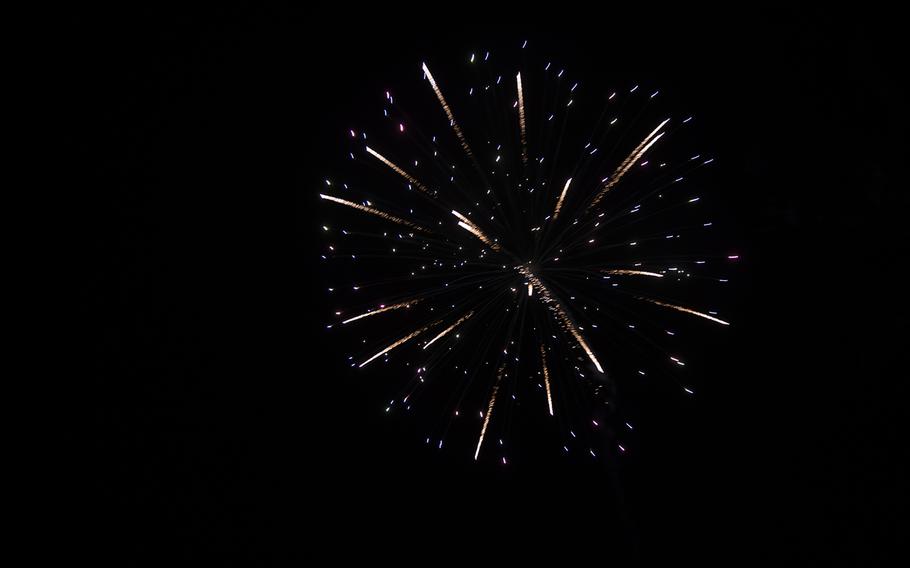
Nomura Hanabi Kougyou's fireworks are made by hand of tiny lumps of powder called hoshi, or “stars,” that scatter light in all directions. (Kelly Agee/Stars and Stripes)
With summer approaching, it’s time to anticipate another season of cultural festivals in Japan, and the exciting displays of hanabi, or fireworks, that accompany them.
Fireworks have been a big part of Japanese culture for centuries. At the forefront of many of those displays is Nomura Hanabi Kougyou, of Mito city in Ibaraki prefecture, which provides the firepower for about 40 events each year.
“Only fireworks can gather thousands of people at once,” company president Yoichi Nomura told Stars and Stripes during a recent tour of his operations. “They can move you and soothe you.”
The company is constantly innovating, coming up with new ways to improve its firework shows, Nomura said. Innovation is a challenge.
“It’s not easy to come up with new ideas for fireworks,” he said. “That is one of the reasons why we want new, young people, to come up with new ideas.”
Nomura is the fourth-generation president of Nomura Hanabi Kougyou, where firework-making skills were passed down to him.
His fireworks are made by hand of tiny lumps of powder called hoshi, or “stars,” that scatter light in all directions. The hoshi are lined up, side by side, inside concentric bowls made of paper.
The oldest fireworks festival on record in Japan was in 1733, organized by Yoshimune Tokugawa, the eighth shogun of the Tokugawa shogunate. It was organized to comfort the spirits of the Kyoho famine and cholera outbreak victims, according to Fujita Kanko, a Japanese tourism company.

Nomura Hanabi Kougyou, of Mito city in Ibaraki prefecture, provides fireworks for about 40 events in Japan each year. (Kelly Agee/Stars and Stripes)
Nomura Hanabi Kougyou has been lighting up the night sky since 1875; its fireworks displays have earned awards from the Japanese prime minister 21 times.
Some festivals they provide fireworks for are the Mito Kairakuen fireworks festival, an annual event held in late July in Mito that attracts thousands of visitors; the annual Tokai Festival Fireworks and the Hitachinaka Fireworks Festival, a two-day summer festival held in Ibaraki prefecture that features more than 3,000 fireworks set to music.